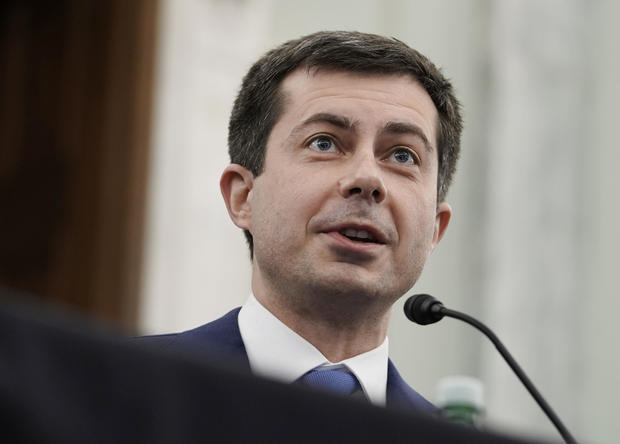From electric cars, trucks and boats to autonomous cargo trains and self-driving race cars, the innovative technology showcased at CES this year indicated a growing shift in the way people and goods move.
Some of the products unveiled this week could power a future full of smart cities where buses and cars communicate seamlessly to plot safe and efficient routes, U.S. Transportation Secretary Pete Buttigieg said Thursday in a virtual speech at the CES 2022.
However, he also emphasized the responsibility policymakers have to consider the potential challenges and safety concerns of new technology.
“We are witnessing the rise of electric and autonomous vehicles, the widespread adoption of recreational and commercial drones, renewed attention to cybersecurity vulnerabilities in our infrastructure, increasingly routine commercial space travel, and perhaps most urgently, the high-stakes race to dramatically reduce transportation’s impact on our climate before it’s too late,” he said.
Buttigieg said the public sector needs to be intentional about the role it plays and announced that his department is establishing a set of six principles, the first of its kind, to support and regulate innovation in the transportation sector.
“These principles will ensure that the enormous potential of U.S. transportation innovation benefits our nation and its people,” Buttigieg said.
Ken Cedeno/UPI/Bloomberg via Getty Images
Electric cars and autonomous vehicles were a big trend at CES this year, but they have garnered criticism in the past for malfunctioning and crashing. One of Buttigieg’s principles addresses safety issues such as these. Specifically, the DOT will create new testing standards and a national incident database for crashes involving self-driving cars.
The principles also ensure equitable access to transportation and support communities and workers impacted by the technological shift in the industry. In the case of electric and autonomous vehicles, the DOT is working with organized labor groups to evaluate and address the consequences such vehicles might have on the workforce.
Under the new principles, public, private and academic sectors will collaborate with one another, Buttigieg said, noting that policies should have the flexibility to change as technology continues to advance.
Although some critics say that innovation and government do not always go together, Buttigieg pointed to companies like Tesla, Apple and Google — all of which used government subsidies and loans to prosper in their early days — to show that the public sector “has always played a vital part in unlocking the innovative capacity” of American entrepreneurs.
He also called on the industry to use technology to confront the climate crisis, saying the goal of innovation in the transportation sector should be to “help America win the 21st century with transportation systems and infrastructure that make communities more competitive, adaptable, and resilient.”
Buttigieg said President Biden’s bipartisan infrastructure bill will help fund some of these endeavors. The bill will provide $550 billion to invest in overall infrastructure projects, including $110 billion for roads and bridges. The package also includes $11 billion for transportation safety and $7.5 billion for zero emission buses, ferries and trains. An additional $7.5 billion is allocated for federal investments in electric vehicle charging stations across the country.
“The investments in that law will help more Americans purchase affordable EVs and save money on gas. They will help more children take the bus to school without being exposed to toxic fumes. And they will put more people to work creating the infrastructure of the future,” Buttigieg said.
He added that innovation isn’t just about the technologies but how the federal government can help make available the resources needed to deliver useful products.
“It’s a huge opportunity, and a big challenge, because alongside that funding, it will be vitally important for us to improve our country’s track record in delivering big infrastructure projects on time, on task, and on budget.”
